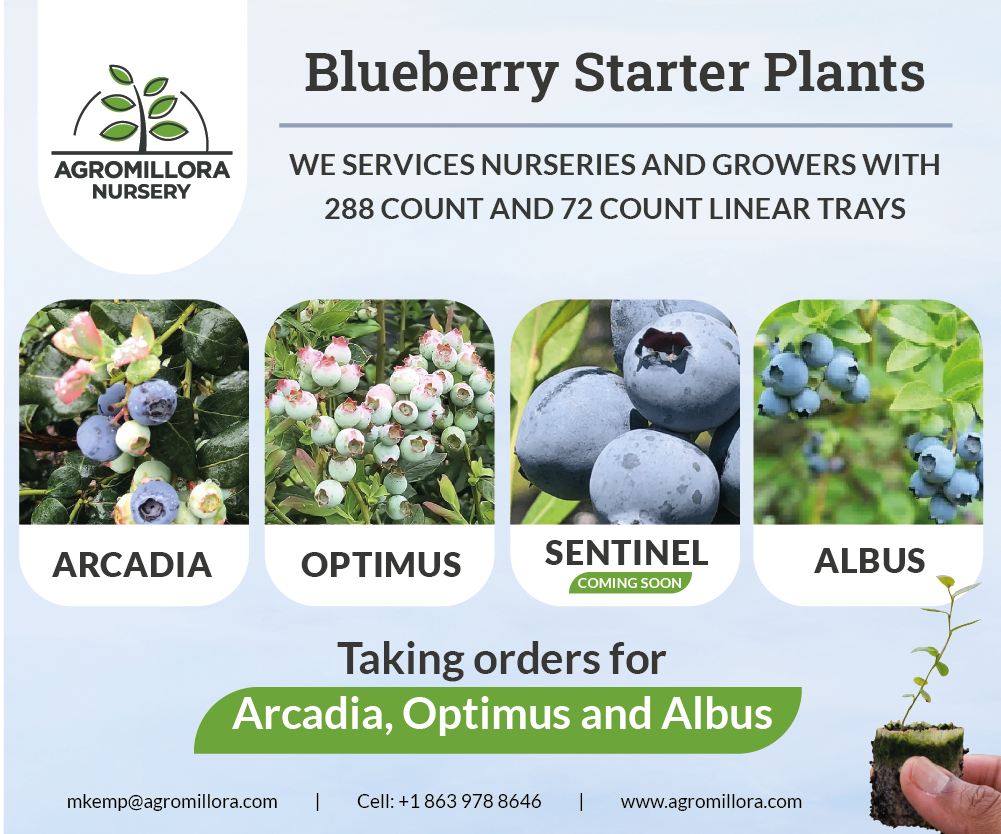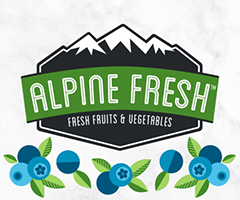Done Right, It Can Maintain Plant Vigor, Balance Growth, and Reduce Pests and Diseases
Pruning is an essential cultural practice for southern highbush blueberry (SHB) production in Florida. Proper pruning can result in many benefits, including maintaining suitable plant vigor, balancing vegetative and reproductive growth, controlling plant size, improving plant shape and structure, facilitating practices such as spraying and harvesting, and reducing incidence of pests and diseases.
Pruning may be done at different times of the year depending on the overall goals and objectives. For mature, bearing plants, postharvest hedging and topping is a major type of pruning that is done soon after the end of harvest, thereby allowing time for regrowth before fall. The overall goals of postharvest hedging and topping are to keep plants at a manageable size and stimulate a strong, healthy, summer flush that will produce most of the fruit-bearing wood for the next year’s crop.
As stated above, maintaining plant vigor and balancing vegetative and reproductive growth are important overall pruning goals that can be partially addressed through postharvest hedging and topping. As the name implies, hedging and topping cuts are mostly non-selective and largely mechanized. Large-acreage growers often use over-the-row pruning machines (Figure 1) and flail hedgers for riser rows (Figure 2). Smaller acreage growers may use hand-held gas-powered trimmers. A common pruning height is between 40 and 48 inches although the height may vary with plant age, cultivar, plant health, and last year’s pruning height. Many growers prune straight across the top giving a “flat top” appearance, although some growers prefer a “rooftop” cut angled 45 – 55 degrees up to a point in the center of the plant.
Most SHB cultivars respond well to hedging and topping, however there are exceptions such as Chickadee, where light tipping instead of the usual pruning has been beneficial in some cases. Some cultivars that are very vigorous growers may also need a light tipping a few weeks after postharvest hedging to reduce plant height and promote branching to help increase yield. This tipping should not take place too late in summer, as it could impact floral bud differentiation or delay the crop’s maturity at the top of the bush.
A major goal of postharvest hedging and topping is to stimulate a strong summer growth flush (Figure 4). However, fertilization, irrigation, and pest and disease management are also important to develop and maintain healthy foliage during the critical flower bud initiation period from late summer through fall. Research has shown the importance of healthy foliage being present during late summer and fall for strong flower bud initiation and development. Early defoliation from disease or other factors can reduce the number of flower buds formed on summer flush wood and reduce the number of florets per flower bud.
Hedging can help reduce disease and pest pressure by removing disease inoculum (e.g., rust and Septoria) or insect pests (e.g., wax scale and blueberry bud mite) from the field. It will also open up the plant canopy to allow for better airflow (promoting faster foliage drying and therefore less fungal disease) and better coverage when spraying fungicides and insecticides. Because hedging can create an entry point for disease pathogens such as Botryosphaeria (stem blight), it is important to spray a broad spectrum fungicide, such as captan, immediately after hedging to minimize the opportunity for plant infection (Figure 3).
When plants are several years old, some of the oldest canes may begin to lose their productivity and should be removed. This type of pruning is called cane renewal pruning and usually begins when plants are 4 to 5 years old. Typically, one or two of the oldest canes are removed by cutting close to the crown. This opens the crown to sunlight and stimulates the production of new canes so that a given plant will have canes of varying age and vigor. Selective hand pruning can also be done at this time by removing small diameter “twiggy” wood in favor of larger diameter wood that will produce more vigorous growth and higher quality fruit. Cane renewal and selective hand pruning are usually done during winter when the plant structure is easy to see. Since pruning may increase cold sensitivity, winter pruning is usually done late in the winter after the coldest weather has passed but should not be done in the fall or early winter prior to the onset of cold weather.
If blueberry plants have not been pruned for several years and are unproductive, it may be possible to rejuvenate the plants through aggressive pruning, depending on the cultivar and overall plant health. With this method, all of the plant's canes are hedged back to 1–2 feet, either in early summer or during winter when deciduous plants are dormant. This will significantly reduce the yield on these plants for the next one or two seasons, and response to this type of pruning may differ by cultivar. If growers face this situation and are evaluating this type of pruning, they should consider using it on only a portion of their field in a given year to maintain some level of production during this process, and to determine the success of this practice on a particular cultivar.
At planting, SHB plants are usually pruned to minimize transplant stress and modify their growth and shape to facilitate later practices such as harvesting. Traditionally 1/3 to ½ of the top of the plant is removed at planting to reduce transplant stress and assist with plant establishment. The amount of pruning at planting will depend on the condition of the plant and the care received after planting. Tall, leggy nursery plants may require more top removal than smaller plants. Although it has been common in the past to remove flower buds from young plants in the first and sometimes the second year after planting to encourage foliage and canopy growth, some growers have been harvesting young blueberry plants within 12 to 18 months after planting (particularly in the evergreen system on vigorous cultivars), so removing buds is not recommended in every situation.
If machine harvesting is a consideration, young blueberry plants should be trained to a narrow crown. Cartons or plastic sleeves may be used in young, recently planted, fields to encourage a narrow crown (Figure 5). However, continued pruning of the crown will be necessary to maintain narrow crowns as plants continue to grow and mature (Figure 6).
In summary, pruning may have different objectives and goals depending on the circumstances, ranging from reducing stress during the planting and establishment period, stimulating vigor, controlling plant size, and facilitating important farming operations such as fruit harvesting and pest and disease management. Additional information on pruning southern highbush blueberry plants in Florida can be found at https://edis.ifas.ufl.edu/publication/HS1359.
CREDIT
JEFF WILLIAMSON
& DOUG PHILLIPS
Figure 1. Bennetts BTS chopper over-the-rows mechanical hedger/topper. Photo credit: J.G. Williamson.
Figure 2. An adjustable flail hedger may be used to prune riser rows. Photo credit: J.G. Williamson.
Figure 3. A broad-spectrum fungicide is applied to plants immediately after hedging and topping to reduce fungal infections to open pruning wounds. Photo credit: J.G. Williamson.
Figure 4. Post-hedging growth flush. Photo Credit: D. Phillips
Figure 5. Many growers are using cartons or plastic sleeves to train young plants to a narrow crown to aid in machine harvesting. Photo credit: J.G. Williamson.
Figure 6. ‘Farthing’ blueberry plants previously trained to narrow crowns with cartons. Continued pruning will be required to maintain narrow crowns as the plants mature. Photo credit: J.G. Williamson.





